You're Always At Home With Refind Realty.
Serving Your DFW Real Estate Needs Since 2005.
We Help You Buy and Sell in The Greater Dallas-Fort Worth Area.
Check Out Our Social Media Channels!
Buying in DFW
Buying your first or next home should be a rewarding and exciting time in your life, and one that you look back on with fond memories.
Thinking Of selling?
The market has changed a lot and I'd love to show you the exact strategy I use to get sellers in DFW top dollar for their property.
Get Pre-Approved
Let me walk you through the entire pre-approval process so you know exactly how much home you can afford.
Sign Up For my
Email List
My emails are a great way to stay up-to-date with local news and real estate market trends, even if you're not currently in the market. So, come on and join me to stay in the loop!
affordability Calculator
Get pre-approved to know exactly how much house you can afford. Use this calculator to get a quick estimate. Contact me for assistance!
DFW New Construction
Discover the latest new home constructions in DFW and take advantage of the builder incentives that are available now.
Let's Make Your real estate Dreams Come True.

Newest Listings
Call Me Today At (713) 505-2280

Refind Realty Blog:

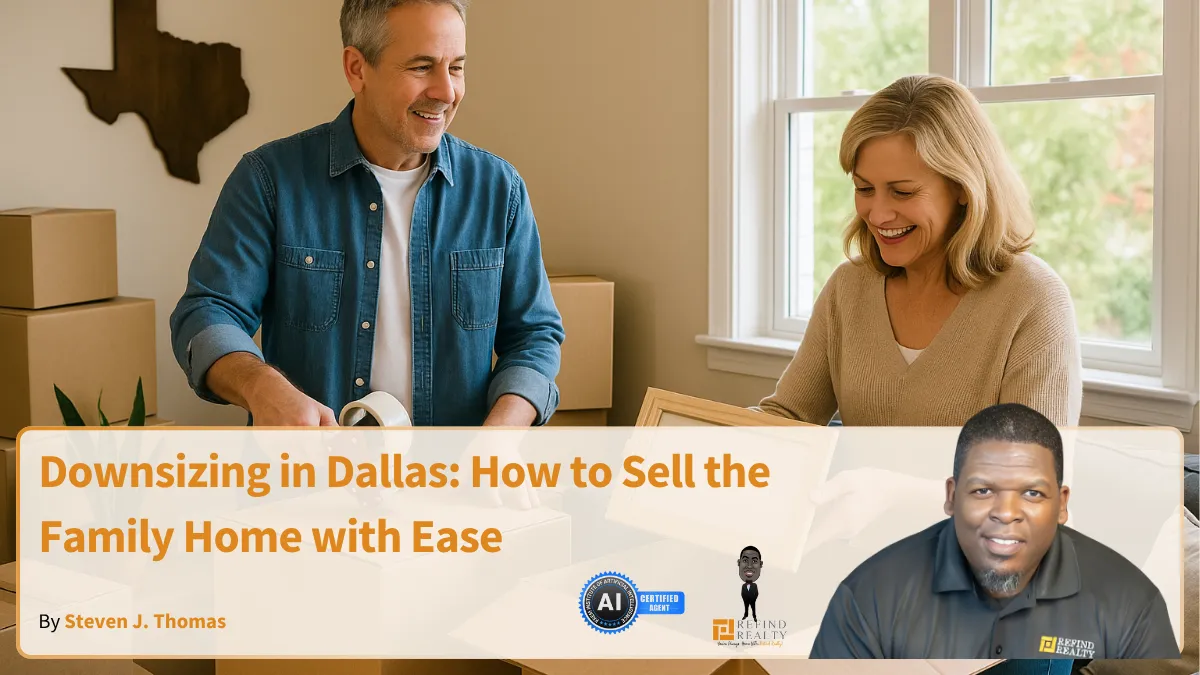
Downsizing in Dallas: How to Sell the Family Home with Ease
Downsizing in Dallas: How to Sell the Family Home with Ease
By Steve

Introduction
You’re ready to downsize in Dallas. But letting go of your family home can feel like a big step. The good news? With the right plan, you can sell your home smoothly, maximize your equity, and move into a lifestyle that fits your next chapter. Dallas homes are holding strong in 2025, with median prices around $315K and homes going under contract in under 30 days. That means the market is balanced—not too hot, not too cold—and ideal for strategic sellers.
Ready to simplify the process? Let’s break it down.
Why Dallas Homeowners Are Downsizing
Lifestyle Shifts
Empty nesters. Retirees. Remote workers. Many Dallas homeowners are finding that "more house" doesn't mean "better lifestyle."
And the numbers back it up: Over 30% of homebuyers are aged 59+, and most are looking for simplicity, not square footage. Downsizing lets you cut the stress of maintenance while gaining flexibility to travel, pursue hobbies, or simply enjoy a low-upkeep life.
Financial Benefits
Selling your larger home and moving into something smaller or newer can reduce utility costs, property taxes, and upkeep—plus unlock tens (or hundreds) of thousands in equity. That extra cash can fund retirement, investments, or help family members get started with their own homes.
If you're buying a new home after selling, check out the New Construction Homes Rebate Program for cashback incentives. And if you're planning ahead, get pre-approved now to streamline your next move.
Neighborhood Spotlights: Where Sellers Have the Advantage
Highland Park & University Park
Luxury homes with great schools, walkability, and historic appeal. These neighborhoods still command strong prices, and well-staged homes sell fast.
Lake Highlands & Richardson
Ideal for sellers moving from spacious single-family homes. These communities attract younger families looking for updated, move-in-ready properties.
East Dallas & Oak Cliff
Areas like Lakewood and Bishop Arts have seen rising demand thanks to their charm and proximity to downtown. If your home has character or recent upgrades, buyers will take notice.
Once you sell, check out Dallas-Fort Worth New Construction Homes to explore downsized options across DFW.
Market Trends: 2025 Snapshot
Median Dallas home value: ~$315,000
Days on market: ~27 days
Median sale price: ~$446,000
According to Texas Real Estate Research Center, listings are up 31% statewide, giving buyers more options—but prices are holding firm. That means sellers can still get top dollar with the right strategy.
Want to estimate how your home stacks up? Use the Home Seller Score to get a personalized breakdown.
What to Budget When Selling and Downsizing
Selling Costs
Agent commissions: 5-6%
Closing costs: 1-2%
Pre-listing repairs & staging: ~$3,000–5,000
Moving & Transition Costs
Packing and movers: ~$2,000–5,000
Storage: ~$100/month (if needed)
Transition housing (if needed): varies
Need help planning? Start with the Home Seller Checklist and explore your Home Selling Options based on your timeline.
Planning Your Next Move: Builders & Communities to Watch
Downsizing doesn’t mean compromising. Many Dallas builders now offer high-quality, low-maintenance homes in active adult and master-planned communities.
Explore top-rated options and smart financing strategies in our New Construction Webinar.
And don’t forget—if you haven’t already, download the Lone Star Living App to search properties, save listings, and access rebates.
Financing & Incentives for Downsizers
Mortgage Options
Bridge loans and HELOCs help you buy before selling, avoid contingencies, and make strong offers on your next place.
Rebate Programs
Many buyers forget about cashback options on new construction. The Rebate Program is one way to recoup thousands.
Simplify the Process
Get started now with mortgage pre-approval to lock in financing before listing.
Final Thoughts
Downsizing your Dallas home is more than a sale—it’s a fresh start. With the right tools, the right agent, and a plan, you can make a smooth exit from your current home and confidently step into your next.
Ready to move forward?
Download the Lone Star Living App now to get expert help, cash back offers, and step-by-step support.
You're Always Home With Refind Realty!
FAQs: Downsizing in Dallas
When’s the best time to sell in Dallas?
Late spring to early summer usually sees the most buyers. But in a balanced market, smart pricing matters more than timing.
Do I need to renovate before listing?
Not always. Focus on clean, staged, and neutral—not perfection. Big renos rarely return their full cost.
How can I sell without buying right away?
Consider short-term rental options or rent-back agreements. Or ask about bridge loans during Home Seller Webinars.
Should I use a specialist agent?
Yes. Downsizing involves emotions, timing, and logistics. Look for an agent with experience guiding sellers through transitions.
What tools can help simplify the process?
Start with the Home Seller Guides, download the Lone Star Living App, and join an upcoming New Construction Webinar.
Stay Informed With My Downloadable
Buyer and Seller guides

6 Smart Ways to Build Home Equity

7 Insider Secrets To Selling Your Home w/o a Lot of Time or Money

DFW Home Seller Negotiation Secrets
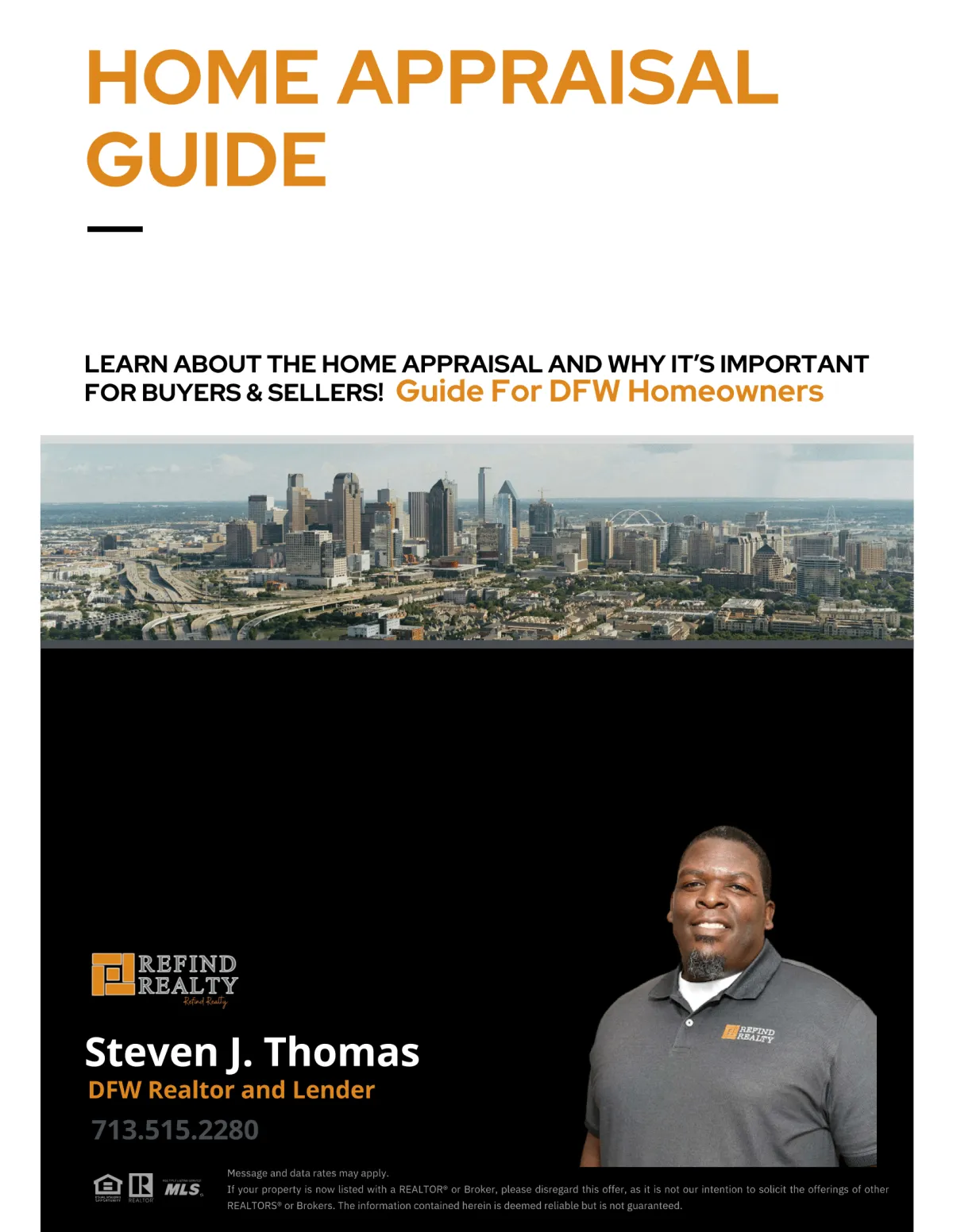
Home Appraisals Guide
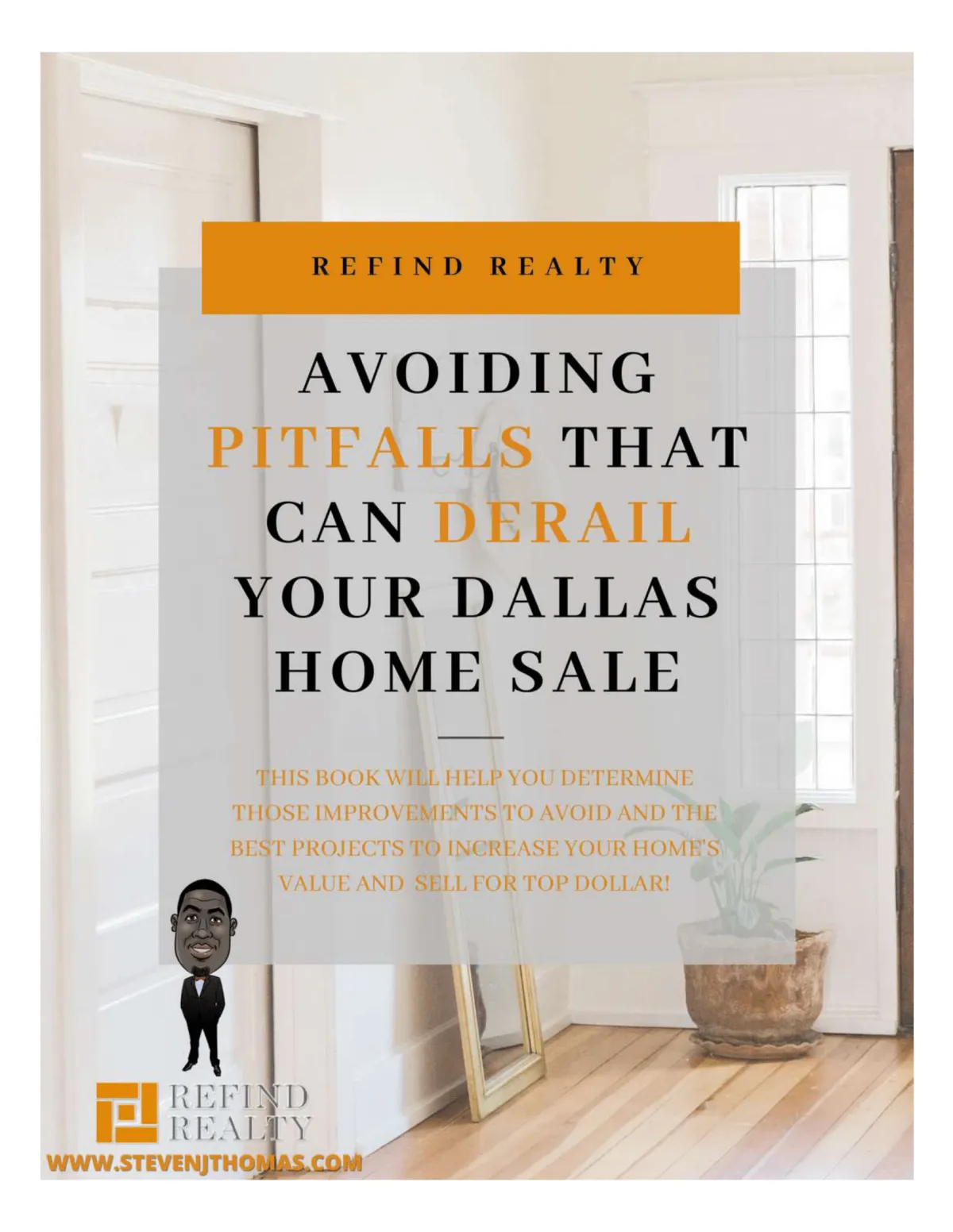
Avoiding Pitfalls That Can Derail Your Home's Sale
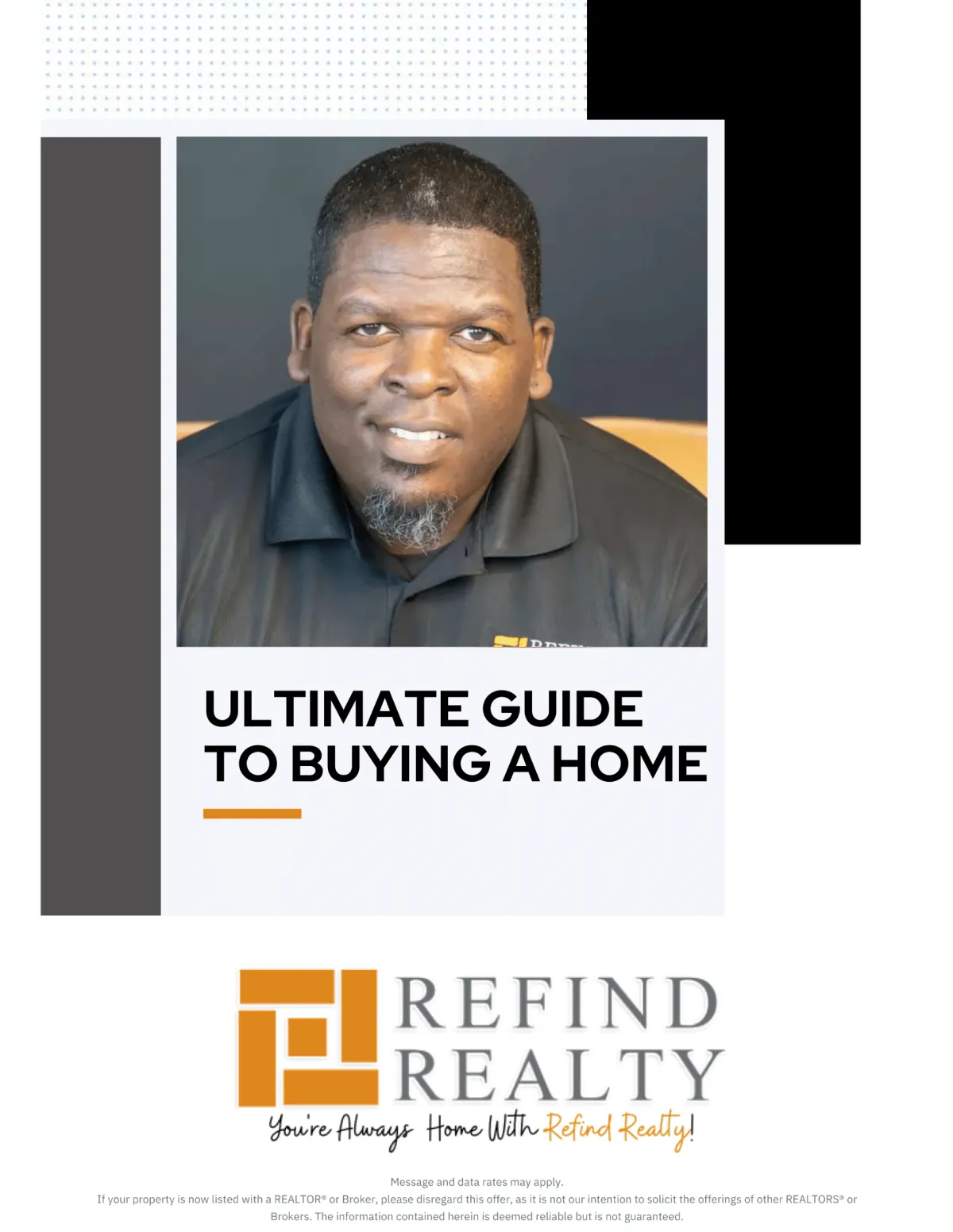
Ultimate Guide To Buying a Home

A First Time Homebuyers Guide In DFW

Are You Ready To Buy?

25 Insider Secrets To Buying A Home

How to Improve Your Credit
Download All My Guides For Free
(I'll send you all 10)


Owned and Operated by Thomas & Thomas Financial Group, LLC
Steven J. Thomas
Steven J. Thomas has been in the financial services industry for the past 19 years and started my career as a Financial Planner for American Express Financial Advisors. I entered into banking with JP Morgan Chase as personal banker in 2003 and was promoted several times up to Small Business Specialist. I earned multiple Million Dollar Club awards and was ranked in the top 5 Small Business Specialist before I branched out in 2005 to start my own Financial Management Company. I ran a successful company before family circumstances lead me to Wachovia Bank in 2008 where I worked as a Senior Financial Specialist. As a Sr. Financial Specialist; I was responsible for the P & L and revenue growth of my banking center. The elimination of my role thru a bank merger lead me to BBVA Compass. I have held various leadership roles at BBVA Compass including Personal Relationship Manager, Branch Retail Executive, Workplace Solutions VP, and his current role as a Retail Manager. As the Regional Workplace Solutions VP, I was responsible for the strategic, tactical, and execution of Partnership Banking relationships, promotion and activity with corporate and non-profit companies in my footprint. I was responsible for the acquisition production for three districts, which includes 51 banking centers and over 300 employees. In May of 2014, I joined the team at Refind Realty and became one of the managing partners in mid-2015.
50+ 5 Star Reviews
Over $60,000,000 in Total Real Estate Sales
167 Properties Sold

Wondering What Your DFW Home Could Be Worth in April 2024?
Get a Professional Home Valuation From A Local Market Expert
Unlock insights into potential selling prices.
Get a personalized analysis sent directly to your inbox.
Stay ahead with updates on property value fluctuations.
Benchmark your property against neighborhood listings.
Get a FREE Home Valuation And Potential Net Sheet:


I used this realtor and it was a great experience. He was patient and very helpful with our journey. He also helped us find a great lender with little hassle on the process, also got us approved for well above the market of our original home so we were able to get more house with a lower mortgage rate. So to anyone who is interested in buying a home take my advice give Steven a call. It’s worth it 😁
Bryant Loring


Steve was absolutely amazing! Everything was easy! Very professional in all aspects. Punctual, responsive, and diligent. He goes above and beyond to ensure you get to see as many homes as you’d like no matter the location. Not only was he knowledgeable about home buying, he also has a resourceful network for new home owner needs. I recommend Refind Realty to everyone!
Nicholas Bishop


I definitely recommend Steven to assist with your home buying needs. As a first time home buyer the process can be overwhelming, but as my realtor he was knowledgeable & patient while addressing my concerns and assisting me with my new home purchase. Thanks again Steven!! :-)
Gayle Mason

Ask Us Anything
Frequently Asked Questions
Why do you need a Realtor?
When buying or selling a home, there are so many options…which can also present a lot of obstacles. Laws change, forms change, and practices change all the time in the real estate industry. Because it’s our job to stay on top of those things, hiring a realtor reduces risk, and can also save you a lot of money in the long run.
When you work with me as your Realtor, you’re getting an expert who knows the area; knows how to skillfully guide your experience as a seller or buyer; can easily spot the difference between a good deal and a great deal. My job is to translate your dream into a real estate reality, and I work hard to earn and keep my business. This also means earning your trust: When you work with me, you’ll be working with a realtor who looks out for your best interests and is invested in your goals.
Which loan should you choose?
There are two different types of loans conventional loans and government-backed loans. The main difference is who insures these loans:
1 - Government-backed loans (FHA, VA and USDA):
(a) - Are, unsurprisingly, backed by the government.
(b) - Include FHA loans, VA loans, and USDA loans.
(c) - Make up less than 40 percent of the home loans generated in the U.S. each year.
2 - Conventional loans
(a) - Are not backed by the government.
(b) - Include conforming and non-conforming loans (such as jumbo loans).
(c) - Make up more than 60 percent of the loans generated in the U.S. each year.
What is the difference between FHA, VA and USDA loans?
1 - FHA LOANS:
FHA loans, which are insured by the Federal Housing Administration, are typically designed to meet the needs of first-time homebuyers with low or moderate incomes. FHA loans can be approved with a down payment of as little as 3.5 percent and a credit score as low as 580.
FHA loans are often called “helper loans,” because they give a leg up to potential borrowers who may not be able to secure one otherwise. For this reason, FHA loans have maximum lending limits, which are determined based on housing values for the county where the for-sale home is located.
Because the agency is taking on more risk by insuring FHA loans, the borrower is expected to pay mortgage insurance both at the time of closing and on a monthly basis, and the property must be owner-occupied.
2 - VA LOANS:
VA loans are backed by the Department of Veterans Affairs and they are guaranteed to qualified veterans and active-duty personnel and their spouses. VA loans can be approved with 100 percent financing, meaning VA borrowers are not required to make a down payment.
Unlike FHA loans, borrowers do not have to pay mortgage insurance on VA loans.
3 - USDA LOANS:
You may also hear about USDA loans, which are backed by the United States Department of Agriculture mortgage program. USDA loans are intended to support homeowners who purchase homes in rural and some suburban areas. USDA loans do not require a down payment and may offer lower interest rates; borrowers may have to pay a small mortgage insurance premium in order to offset the lender’s risk.
What’s a conventional loan? Understanding what it means to be conforming and non-conforming
Buyers who have a more established credit history and a larger down payment may prefer to apply for a conventional loan. These loans may offer a lower interest rate and only require the home buyer to purchase monthly mortgage insurance while the loan-to-value ratio is above a certain percentage, so a conventional loan borrower can typically save money in the long run.
Conventional loans are divided into two types: Conforming loans and non-conforming loans.
1 - CONFORMING LOANS:
Conforming loans are those that meet (or conform to) predetermined standards set by Fannie Mae and Freddie Mac — two government-sponsored institutions that buy and sell mortgages on the secondary market. By selling the loans to "Fannie and Freddie," lenders can free up their capital and return to issue more mortgages than if they had to personally back every loan that they approve.
The main standard for conforming loans is that the amount borrowed must be under a certain amount; in Alaska, a single-family home loan must be under $647,200 in order to be considered conforming.
Properties with more than one unit have higher limits.
2 - NON-CONFORMING (JUMBO) LOANS:
But what happens if a borrower wants to borrow more than the Freddie- and Fannie-approved loan amount? In this case, they would have to apply for a “jumbo loan,” which is the most common type of non-conforming loan.
Because the lender cannot resell the jumbo loan (or any non-conforming loan) to Freddie Mac or Fannie Mae, jumbo loans are considered to be riskier than a conforming loan. To protect against this risk, the bank will typically require a higher down payment; the interest rate on a jumbo loan may also be higher than if the same borrower applied for a conforming loan.
What kind of rate should you choose?
Rate types: Fixed-rate vs. adjustable-rate mortgages.
In addition to the loan type you choose, you’ll also have to determine if you want a fixed-rate mortgage or an adjustable-rate mortgage (ARM). A fixed-rate mortgage has an interest rate that does not change for the life of the loan, so it provides predictable monthly payments of principal and interest.
An adjustable-rate mortgage typically offers an initial introductory period with a low-interest rate. Once this period is over, the interest rate adjusts periodically, based on the market index. The initial interest rate on an ARM can sometimes be locked in for different periods, such as one, three, five, seven, or 10 years. Once the introductory period is over, the interest rate typically readjusts annually.
Office 1229 E. Pleasant Run Ste 224, DeSoto TX 75115
Call :(713) 505-2280
Email: [email protected]
Site: www.stevenjthomas.com
Facebook
Instagram
X
LinkedIn
Youtube
TikTok